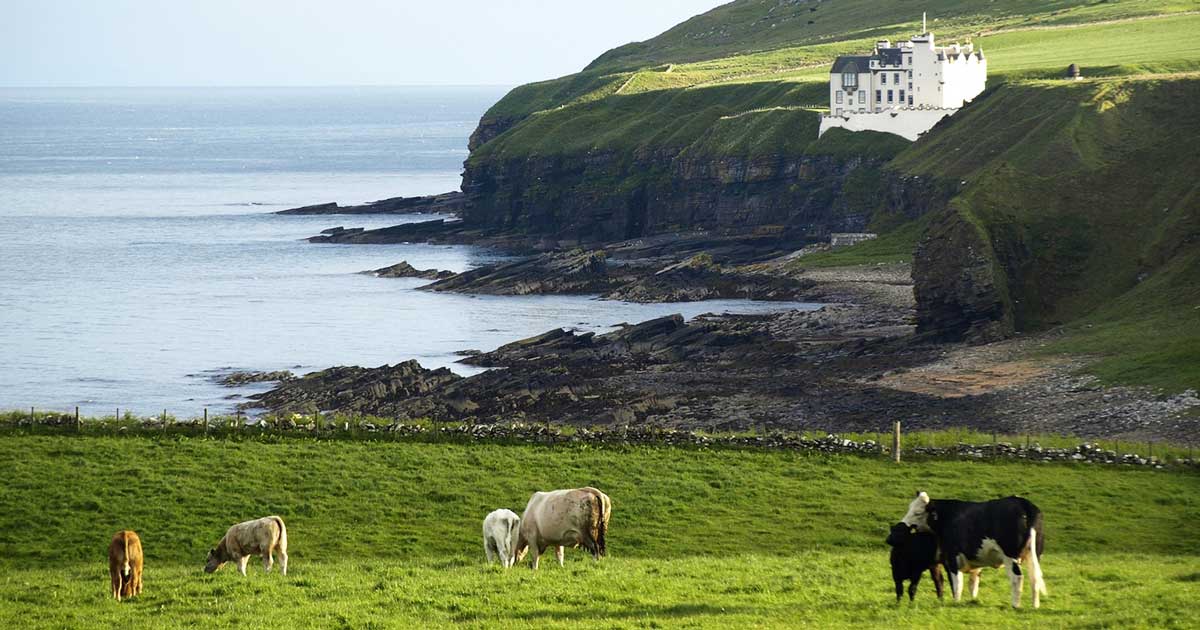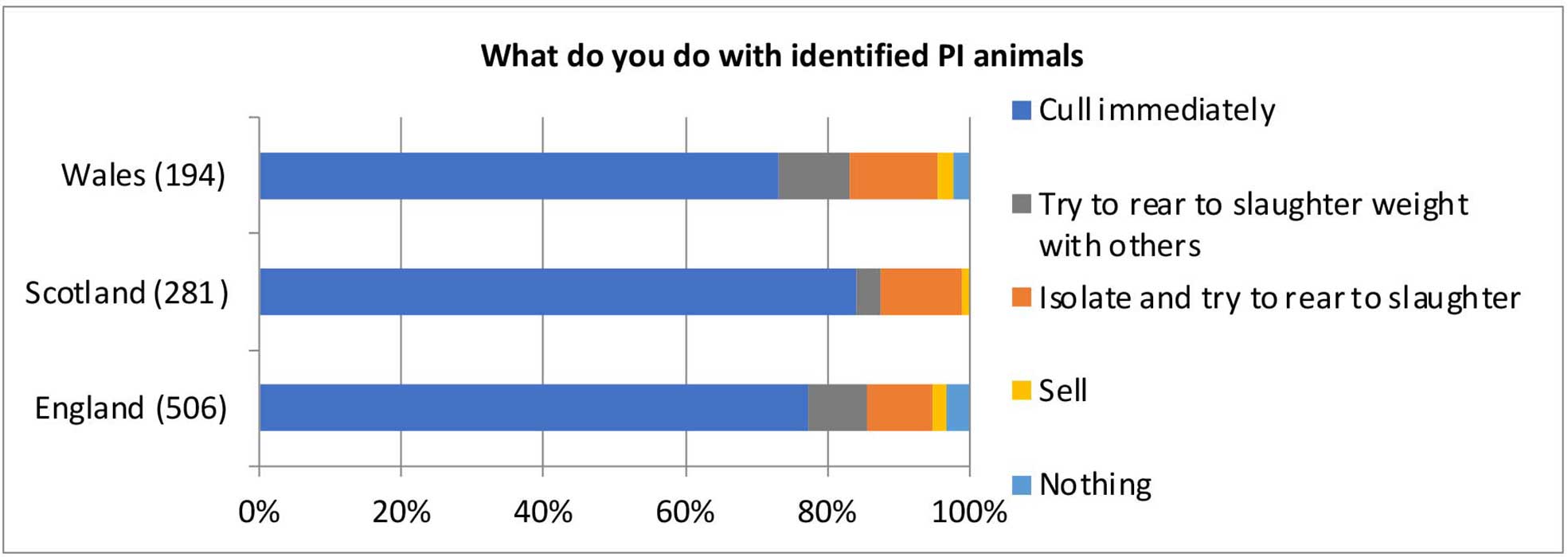6 May 2022
Neil Shand, National Beef Association chief executive and BVDFree England vice-chairperson, looks at progress made in each nation and what needs to happen next.

A BVD eradication scheme has been mandatory in Scotland since 2013, and 90 per cent of herds are free of the disease, but attention is now turning to dealing with persistently infected animals.
Control and eradication of bovine viral diarrhoea (BVD) remains a mixed picture throughout the UK, with each nation operating its own distinctly different scheme. It seems incomprehensible that the four home countries, trading as closely within the UK as they do, have such vastly different approaches to BVD control. The sooner we eliminate the differences in methodology, the more likely we are to eradicate the disease.
Understandably, opinions differ on which country’s scheme has had the most success. The votes are still being counted, but it would appear a hybrid option incorporating the best and most effective measures from each scheme would lead to control and eradication within the shortest time frame.
England is currently lagging behind in terms of policies for BVD control and eradication. Many farmers do not know what their current BVD status is, let alone have measures in place to control it. The new Animal Health and Welfare Pathway (AHWP) will help those beef herds not presently participating in any BVD eradication scheme to get a foot on the ladder, and provide them with the impetus to start on the path to becoming BVD free.
While the BVD picture across the whole of the UK is varied depending on which country you are in, some distinct patterns emerge:

One area that seems to be decidedly grey within all the UK schemes is the subject of the PI animal. None of the schemes currently offers a compensation package, nor do any of them offer direct guidance on how to deal with the discovery of a PI. This is probably the biggest fundamental error all schemes within the devolved countries have made. Before any scheme – compulsory or otherwise – is rolled out in England, it is imperative the fate of PI animals be determined, along with consideration for the financial impact to the farmer of the enforced destruction of a percentage of their annual production.
As part of the new AHWP, which is linked to the Government’s new funding for agriculture, an annual vet visit will be funded for farms in England. Commencing in spring 2022, this visit will be to the value of £522 for all eligible beef units with 10 or more cows, which must focus on BVD for those not linked to a scheme.
This will be done by looking at four main areas:
The AHWP team has spent nearly two years developing the strategy and policies within it and, during the research and consultation period, it became clear that the farm’s own vet is the key to it succeeding.
The relationship between vet and client tends to be strong, and the vet is one of the most trusted sources of information. Building on this, and equipping vets to guide clients through the necessary assessments and planning journey, is likely to deliver the greatest rewards, both in terms of animal welfare and bottom line for the business. Information is freely available at GOV.UK and anyone interested can also register for alerts.

Meanwhile, elsewhere in the UK other national schemes continue to develop. The Scottish BVD eradication scheme has been mandatory since 2013, and is currently in phase five. Geographically located pockets of herds with BVD remain, and the focus has switched back to these breeding herds, concentrating on early testing and identification and removal of any remaining PI animals. Around 90% of Scottish herds are BVD negative; however, some have opted to be naive through testing and surveillance. Not protecting stock via vaccination obviously means they are very vulnerable to any circulating infection spread by PIs, often unwittingly brought into a herd through a biosecurity lapse.
So, where next for Scotland? The aim remains “very low prevalence” with the acknowledgement that, due to the very nature of the countryside and the way farms are set up, complete protection through 100% biosecurity is not possible. Scotland’s policymakers are considering a number of options, including compensating farmers for removal of PIs and future surveillance strategies to ensure continuation of the scheme’s aims. The Scottish scheme has benefited from the involvement of vets from the start, and the farmer database – complemented by the ScotEID helpline (www.scoteid.com) – has been invaluable, both as a management and an enforcement tool.
In Wales, Gwaredu BVD has focused on the serological screening of youngstock, which makes it very different from the other UK schemes. The voluntary phase of the scheme will continue until December 2022 and possibly beyond. The challenge for Wales – as with other voluntary schemes – has been to continue developing farmer engagement once the initial early adopters have signed up. Although in excess of 1,000 producers signed up for the first time in 2020, work is still to be done.
As in Scotland, policymakers for Wales are looking at where to take the scheme next. An intention has been expressed for a multi-species database, which will initially concentrate on BVD. Other options include legislation, mandatory surveillance, testing for antibodies, movement restrictions and, in some cases, inspection of facilities.
In Northern Ireland, where the scheme was made compulsory in 2016, engagement is correspondingly high, with 20,677 herds participating at the end of August 2021. It remains surprising – but also in line with what has been seen in other nations – that 86 PI animals remained in the national herd at that stage. The vet’s role in communicating the requirement and benefits of removing any PI immediately on identification cannot be underestimated.
All schemes require buy-in from farmers, and some are more reluctant than others – perhaps, it is the fear of the unknown find that prevents some from engaging with eradication programmes.
One missing link from all the schemes is the role played by a planned vaccination programme. It would seem little point exists in testing to eradicate a disease if you leave your herd vulnerable to exposure because of the inferior biosecurity and practices of others. It seems clear that the knowledge and expertise of vets plays a vital role in selling the benefits to those that have so far resisted testing and vaccination programmes. The vet’s provision of education and aiding best practice decision-making is key in the fight against BVD.